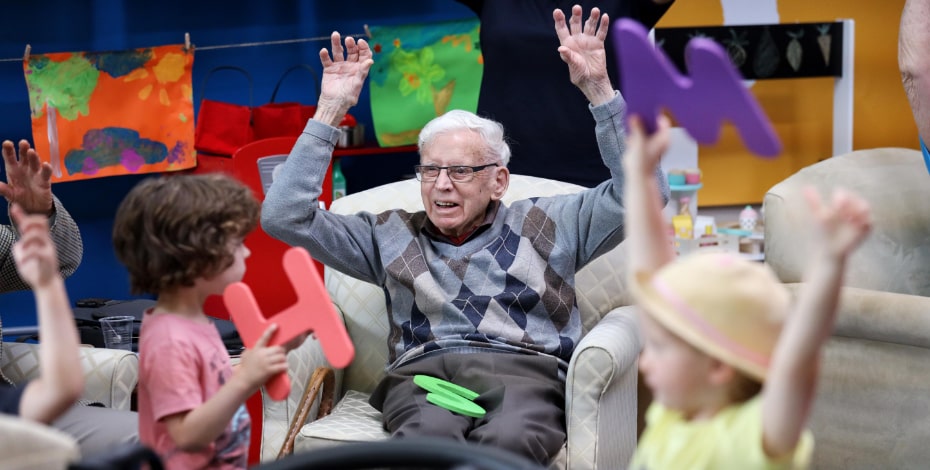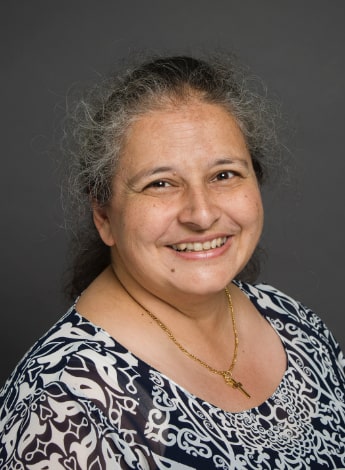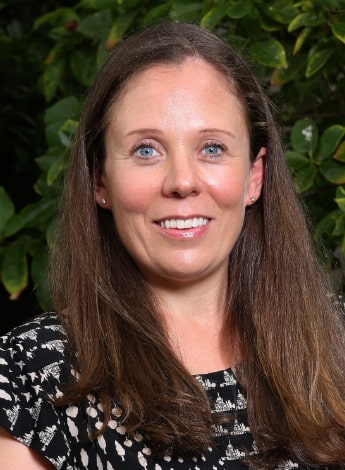
Welfare of older people

As health professionals, physiotherapists are an integral component of the older person’s journey. With pop culture and mass media shining a light on the machinations of aged care in recent months, the importance of living better for longer—and the reforms needed to facilitate that—have never been more topical. Melissa Mitchell reports.
Turn on the nightly news or tune in to the national broadcaster and it is hard not to notice the spotlight trained on aged care, on the health professions involved in its delivery and on the controversy surrounding systemic failures that have led to poor service delivery and abject failure to meet the needs of older, often very frail and vulnerable citizens. For months now the nation has been focused on aged care in vastly different arenas— the most recent being the Royal Commission into Aged Care Quality and Safety and the other, a popular factual television series franchise that screened recently on the ABC. At the heart of each is the welfare of older Australians, and both send a clear message that the time to fix the problems in aged care is now.
With the release of the Royal Commission into Aged Care’s Quality and Safety interim report last month, the sorrowful stories about poor care and neglect, which were relayed to the Commission and detailed in its report, have highlighted significant gaps in the system. The stories are a sign that there is urgent need for the government to invest in transformative reforms, including appropriate education and training to ensure staff can optimally manage and support the complex care needs of the older population.
APA National President Phil Calvert said the shocking accounts of harm and neglect detailed in the interim report must spur immediate action. ‘The aged care system has been left to its own device for too long,’ Phil said. ‘The Royal Commission’s confronting report sends a clear message—things must change now.’ The APA has long argued on a range of critical issues including that a safe and appropriate mix of skilled staff, including physiotherapists, must be mandated to ensure ageing Australians receive high-quality care.
‘Unfortunately, funding has incentivised keeping the elderly sick and on medication rather than providing rehabilitation and wellbeing programs,’ Phil says. ‘The Government must act now to ensure there is funding for care programs that prevent falls and illness, instead of just treating these things when they happen. The focus must be on improving quality of life.’
There are significant numbers of physiotherapists providing much- needed care in environments such as community and residential aged care, and at various centres every day. APA Gerontology group chair, APA Gerontological Physiotherapist Vanessa Jessup, says physiotherapists who work in the aged care sector are frequently working with highly variable individuals, often with multiple co-morbid conditions and highly complex health and care needs that encompass the physical and psychosocial. This level of complexity calls on clincial excellence in the treating physiotherapist.
‘On a really emotive, fundamental level, I believe that physiotherapists are an integral component in the older person’s journey. We can be driver for optimal ageing; we look for the incidental, the small, the meaningful; we make meaning of all of this through comprehensive person-centred assessment and care planning. From the most highly functioning older person to the most frail—we seek to enable participation and engagement and we advocate for their specific optimal capacity and quality of life,’ Vanessa says.

Vanessa Jessup
‘The older person or their loved ones will often reflect to us “oh well that’s old age” or “what can you expect at 92 or 75 or even 65?” or “you can’t make a difference now, I’m too old”. The perception of “old” or “aged” is a social construct which can vary significantly between cultures and social groups. We are challenged to look at our own perception, our own values, beliefs and cultural biases. We will all die—that is just part of the human continuum, but until we get there we are all living. Along the way, we redefine quality of life and have different experiences of quality; as physiotherapists, we can play an instrumental role in supporting an individual in the reforming of their uique quality of life,’ she says.
‘Often the most transformative change is in the seemingly smallest of change and comes when we are person-centered, evidence-based and engaged in shared decision- making. And ever more frequently, it requires us to understand unique environments such as disincentivising funding models and interjurisdictional issues—health and aged care interface being an example and one where physiotherapists despair at sometimes being prevented from delivering the holistic care their ageing clients require. Understanding of the new Aged Care Quality Standards and Charter of Aged Care Rights is also very helpful.’
The challenges for physiotherapists working in aged care are many, but so too can be the opportunities and rewards, Vanessa says.
A glimpse into the potential to improve the lives of clients in aged care shown in the television series Old People’s Home 4 Four Year Olds has captured the public’s imagination and generated discussion in loungerooms across the country. Based on the popular UK version, the Australian factual television series has, for the first time, taken the concept of intergenerational play to the masses. The first season show, which aired on the ABC August, has not only become a smash hit but has also lifted the lid on the many challenges faced by the older population living in residential care facilities.
Intergenerational play in aged care is not new to Australia; the bringing together of the generations for the mutual benefit of each has been reducing social isolation and promoting physical and mental activity here for decades. Popular in countries such as Norway, Sweden, France, the UK, the Netherlands and Canada, dedicated intergenerational play and learning programs are run through playgroups and aged care facilities to bring young and old together to help tackle social and wellbeing issues such as depression, sedentary lifestyles, loneliness and social isolation. But in Australia the concept has just gone mainstream, helping to shine a light on how physiotherapy can play a role by featuring the work of Sydney physiotherapist Nicola Kertanegara in the factual television series.
The series is billed as a unique social experiment that brings together elderly people in a retirement community with a group of four-year-olds to ask the question ‘could this encounter between young and old help transform the lives of the elderly?’. To gauge the responses in the 11 aged care residents, aged in their 70s, 80s and 90s, a team of health professionals— including Nicola, a geriatrician, professor in geriatric medicine and a child psychologist—oversaw their progress on a week-by-week basis.
Before the experiment began, Nicola recorded the grip strengths of each elderly participant using the hand dynamometer to indicate overall strength and frailty, she performed the Timed up and Go (TUG) test to determine their mobility, speed and cognitive ability to follow staged commands, and closed with a general balance test. The residents, from RSL Anzac Village on Sydney’s northern beaches, were then introduced to the 10 children and were tasked with activities that included completing a timed walk through a giant maze, an excursion to the beach, putting on a concert, and participating in gentle exercise masked as play, such as lawn bowls and totem tennis.

Nicola Kertanegara
The results were tracked for the duration of the series, and milestones discussed on air as each week progressed. Nicola says although she was not involved in the testing of the depression scale (that was done by the geriatrician), some of the aged care residents initially scored very high on the scale—some in double figures—indicating they were likely suffering from depression. This had dropped significantly by the end of the series, indicating a decrease in depression among some of the senior participants. At the show’s conclusion, the residents had also shown marked improvements in their mobility, balance and the amount of exercise they were getting, Nicola says.
I think people in residential care have lost the reason and the drive, and it’s very hard for us physios to say “well you need to do these exercises” or “you need to walk down the corridor” - Nicola Kertanegara
‘Not surprising to me, because I work in this area, but surprising to most people is the very low step count that older Australians have, especially when they live in residential care. More than half had less than 500 steps a day, and there were two or three who had less than 100 steps a day,’ Nicola says. ‘If you think about what people are doing in a nursing home, they get out of their bed and sit in their chair, breakfast is brought to them. They might walk to the toilet once or twice, or they might be incontinent so never walk to the toilet, and then their meals are brought to them. It’s incredible that these people [at the end of the series] were getting a step count in the thousands.
‘That’s a dramatic change, just by giving people a purpose to get out of their room and a reason to participate. I think people in residential care have lost the reason and the drive, and it’s very hard for us physios to say “well you need to do these exercises” or “you need to walk down the corridor”. Why do they need to do that? We know the reasons for their health, their mental health, for mobility and cardiovascular and all those reasons, but to them personally, what do they gain? There has got to be a driving factor—that’s where these children made all the difference, and that’s where I was so surprised.’
For Vanessa Jessup, the results of the show have not been surprising. Given the program’s relatively short timeframe of seven weeks, seeing the older participants respond positively to interaction with the children was not unexpected, she says. ‘We’re human and we want to connect,’ Vanessa says. ‘To me, we have an innate need for meaningful connections.’ As the show was the first research project of its kind in Australia, Vanessa says she hopes there will be a further commitment to research the benefits of this structured multidisciplinary model of intergenerational play and to back up those findings with evidence.
‘There are many organisations that will have children coming in or the older person will go out into the community and read to the children during reading time at kindy and so on…but this show is, of course, extremely structured,’ Vanessa says. ‘And that structure, you would have to say, has been integral to these outcomes. I’d say particularly in the physiotherapy.’
Vanessa hopes, too, that the series will have other benefits—encouraging more physiotherapy students to consider working, with appropriate support, supervision and mentoring, in the aged care sector. It is also a vehicle for raising awareness of the role of physiotherapy and for individuals and the families of people in aged care to start questioning whether they or their relative would benefit from having access to a physiotherapist, and to start expecting and asking for physiotherapy involvement.
APA Gerontology group chair Vanessa Jessup says she would like to see more physiotherapy students consider a career in aged care.
Filming behind the scenes
Nicola Kertanegara has loved working in aged care from the very beginning of her career. Achieving fantastic outcomes and making a difference in the lives of her older patients with simple interventions is a passion for Nicola, who is the senior aged care physiotherapist at Royal North Shore Hospital in Sydney and the rehabilitation coordinator for the North Shore Ryde Local Health District.
Nicola was invited to be a part of Old People’s Home for 4 Year Olds after the production company approached her manager looking for a suitable candidate. Nicola agreed to meet with the producer and before she knew it she was sitting in front of a panel of about eight people being interviewed on camera. ‘I was thinking “I’m a normal physio, I’m not a TV person, I don’t know why I’m here”.’ Initially helping with advice and planning aspects of the show from a physiotherapy perspective, Nicola’s role evolved to an on-camera position that required long days of shooting, often starting at 7.00 am.
‘We [Nicola and the geriatrician] helped plan the activities [on the show] and we were the conservative ones, the voice in that space saying “Oh no, you can’t do that”. There was a lot of negotiating about what activities they [the residents] would participate in,’ Nicola says.
‘The older participants surprised me. They did a lot more than I thought they were capable of, and that just shows me maybe I’m too cautious as a physio potentially. There is no way I would normally think it would be a safe or good idea to take a nursing home resident to the beach and get them to sit on a rocky stool and play in the sand with children. That, to me, is a very risky task but they did it and nobody hurt themselves. Is that luck? I’m not sure.’
Nicola says the series’ production team regularly sought her opinion on a wide variety of issues during filming, and she admits she sometimes found it difficult to ‘answer TV questions in an evidence-based, appropriate medical way’. ‘Physiotherapy is a very evidenced-based profession and a lot of responses to things are quite measured,’ she says. ‘But our opinion was respected and now the broader community who watch this TV show and who know little about health can say “Oh grandma’s not great on her feet, maybe we should go and see a physio”.’
Click here to watch the five-episode series on ABC iVIEW.
© Copyright 2025 by Australian Physiotherapy Association. All rights reserved.





